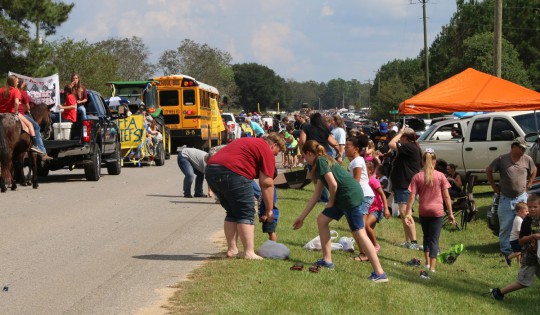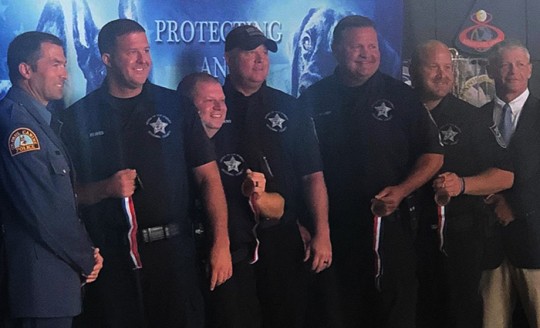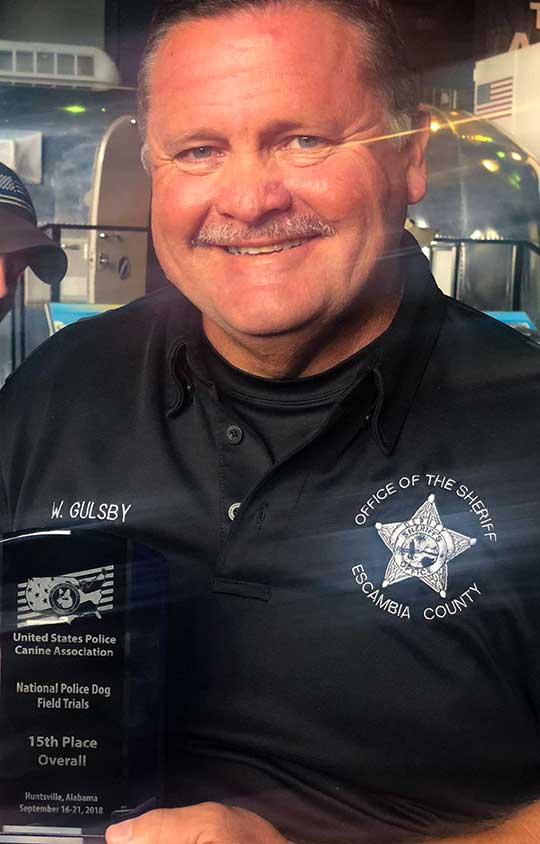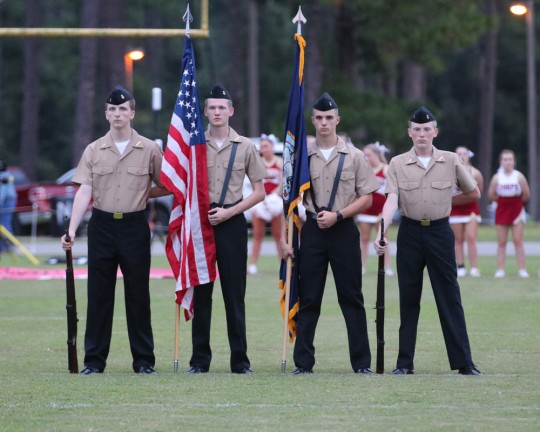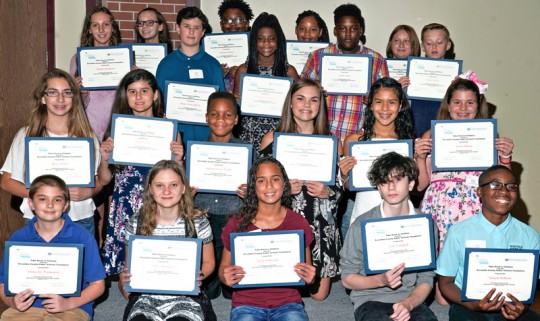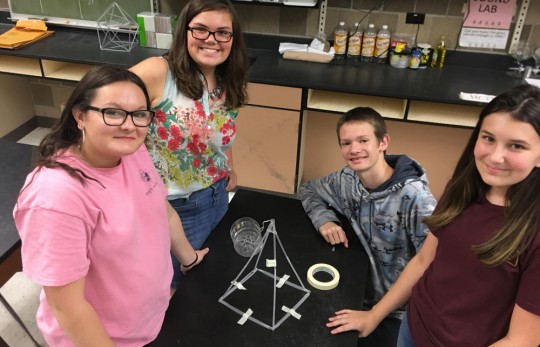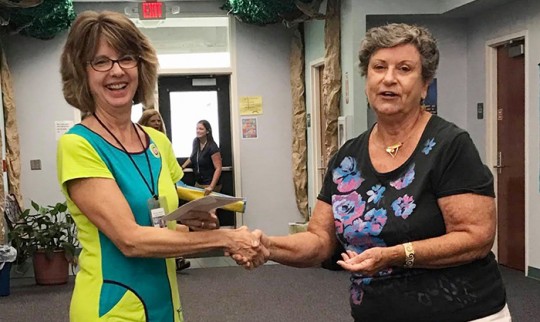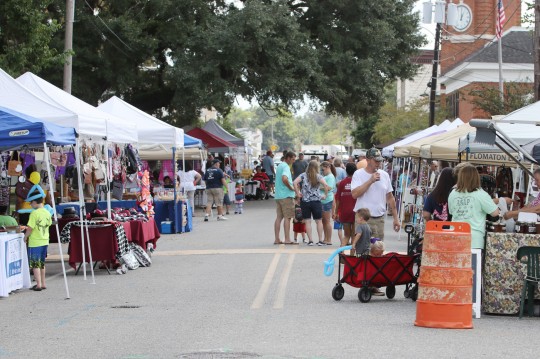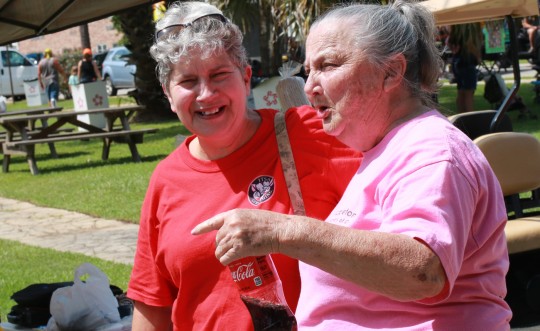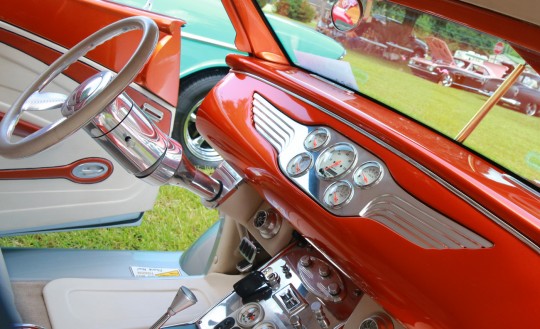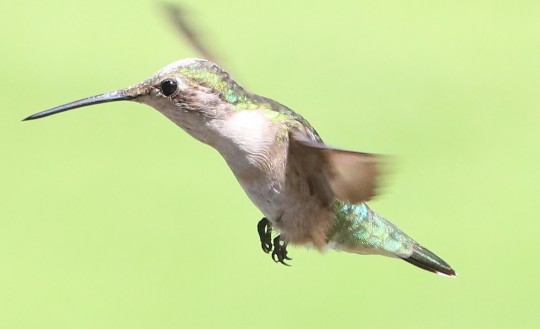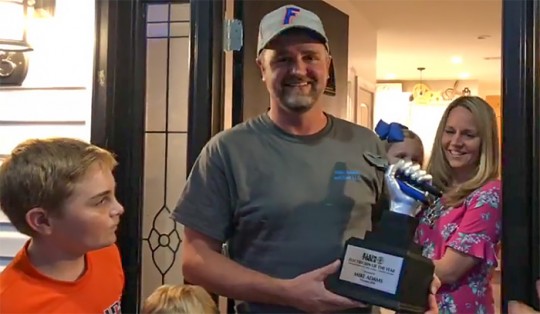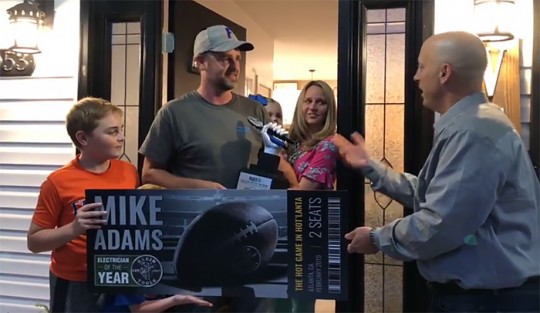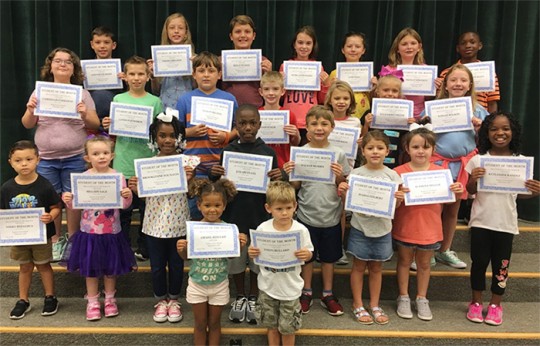Northview Sets Homecoming Parade; Entries Now Accepted
September 27, 2018
The annual Northview High School Homecoming Parade has been set for Friday, October 5.
The parade will line up at 12:30 p.m. and travel from Bratt Elementary School to Northview High. Entries are being accepted now; there is no cost to enter. For a printable entry form, click here. Entries are due by October 1.
A homecoming meal to support the Tommy Weaver Memorial Scholarship Fund will be sold for $7. Meals will be served after 10 a.m. on October 5 and will include a barbecue sandwich, chips, dessert and a drink.
Contact Perry Byars at (850) 327-6681 ext. 248 or email pbyars@escambia.k12.fl.us for more information or to reserve homecoming meals.
The Northview Chief’s homecoming game will kickoff at 7 p.m. on October 5 against the Jay Royals.
Pictured: The 2017 Northview High Homecoming Parade in Bratt. NorthEscambia.com photos, click to enlarge.
Escambia Sheriff’s Office K-9 Team Places At National Field Trials
September 25, 2018
The Escambia County Sheriff’s Office K-9 Team earned two big wins recently at the United States Police Canine Association’s National Patrol Dog Field Trials.
During the Four-Man Department Team Competition, Escambia County’s Deputy J. Marcum and K-9 Benga, Deputy J. Rogers and K-9 Axel, Deputy M. Watkins and K-9 Bady, and Deputy J.R. Reaves and K-9 Alek took third place.
Master Deputy Wayne Gulsby and K-9 Enzo won 15th place overall out of 85 teams.
Photos for NorthEscambia.com, click to enlarge.
Bonus Pics: NHS Band, Cheerleaders
September 24, 2018
Click here for a bonus photo gallery featuring Northview cheerleaders, the Tribal Beat Band and the NJROTC.
For game details from Friday night and an action photo gallery, click here.
NorthEscambia.com photos, click to enlarge.
Take Stock in Children Selects 25 New Students For Scholarship Program
September 24, 2018
There were 25 middle school students were recently selected for the Take Stock in Child Scholarship program.
There are now a total of 126 students in grades 7-12 in Escambia County’s program. Students will receive a college scholarship upon graduation from high school as long as they maintain good grades, attendance and citizenship, remain crime and drug free, and meet weekly with a volunteer community mentor.
The newly selected students include:
- Ernest Ward Middle School – Allyson Jones, Dequan Shabazz, Brier Thompson
- Ransom Middle School – Kaylee Emmons, Bobbie-Sue Jarrell, Quentin Lewis-Wright, Malachi Williams
- Jim Bailey Middle School – Henry Addy, Nathan Barberi, Luke Campbell, Brogan Dougherty, Nyla Hunter-Smith, Keyonte Smith, Jayla Stallworth
- Brown Barge MiddleSchool – Ralynn Durant, Jessica Hatton, Bailey Poston
- Ferry Pass Middle School – Jaden Allen, Ariyanna Cunningham, Nolan Howie, Chaeli Lackey
- Workman Middle School – Nancy Mendez-Rostro, Chancellor Washington
Take Stock in Children is a statewide non-profit organization operating locally under the Escambia County Public Schools Foundation. Take Stock provides “scholarships, mentors & hope” to deserving young people selected through a need-based application process through the public middle schools at the end of their 6th grade year. Scholarship donations from local foundations, organizations, businesses and individuals are matched dollar-for-dollar when scholarships are purchased from Florida Prepaid College Foundation each year and are held until students successfully graduate from high school.
Pictured are: (front, L-R) Chancellor Washington, Brier Thompson, Jayla Stallworth, Luke Campbell, Malachi Williams, (second row) Bailey Poston, Chaeli Lackey, Quentin Lewis-Wright, Allyson Jones, Nancy Mendez-Rostro, Jessica Hatton, (third row0 Brogan Dougherty, Henry Addy, Arianna Cunningthom, Jaden Allen, Chancellor Washington, (fourth row) Kaylee Emmons, Dequan Shabazz, Ralynn Durant, and Bobbie-Sue Jarrell. Courtesy photo for NorthEscambia.com, click to enlarge.
Science Is Cool: Ransom Students Take The Straw Structure Challenge
September 24, 2018
Last week, science students at Ransom Middle School took part in the Straw Structure Challenge – build a freestanding structure at least 30 centimeters (about a foot) tall made only of straws and paper clips to support as many common nails as possible.
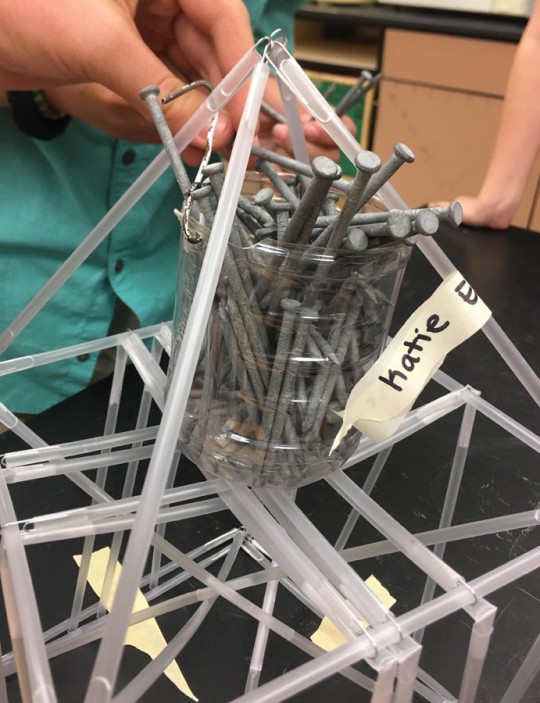 The strongest straw structure supported 122 nails — about two pounds.
The strongest straw structure supported 122 nails — about two pounds.
Ransom science teacher Louis O’Rear explains the Straw Structure Challenge. and in he explains why “Science Is Cool”, in his own words:
These days my Straw Structure Challenge project would be labeled a STEM project. Education is all about combining and applying skills and subjects. This is a perfect example of project-based learning that combines science, technology, engineering, and math. It’s a beautiful thing when we can pull multiple subjects together, and let the students actually design, create, and build something with their own hands. Although I encourage them to do research on their own time, this is about getting back to the basics of using their hands, their imaginations, and a few basic tools to create something out of nothing. This is my 26th year in the classroom, and there is a definite trend in the students’ abilities (or the decline of their abilities) to create something from scratch, using their hands. The bulk of these kids don’t play outside and “do things” as we did. But they are slowly discovering my motto… If the hands do it, the mind will not forget it.
Kids today are excellent at tapping the screen of their phones with their two thumbs. I challenge anyone to out-text these kids today. When I was a kid it was an insult to tell someone they were all thumbs, but that is what so many of our kids are slowly becoming. It helps that so many of our Ransom parents know how important it is to limit their child’s screen time. Each student has a Chromebook laptop provided by the school district, and most have a smartphone. They are surrounded by technology, and they know how to utilize it, but that is just the “T” in STEM. It is important for them to experience other aspects of this project, of science in general, and not just read about it, or see videos about it.
My goal is for them to glean some important information from this hands-on project. FIRST: When constructing with straight members (straws, or toothpicks, or popsicle sticks, or two by fours in their attic at home, or giant iron bridge girders, or sections of the cell phone tower in their neighborhood), the triangle is their best friend. Barring the ability to build an arch shape, like the top of an egg, the triangle is the strongest shape they can use for building. SECOND: the way to accomplish this is to design a structure while taking into consideration the forces of compression and tension. THIRD: I give a few bonus points for the group with the best ratio of nails to straws. Having already thoroughly learned about ratios from our math teachers at here at Ransom, it’s easy to teach them how to apply ratios to real situations.
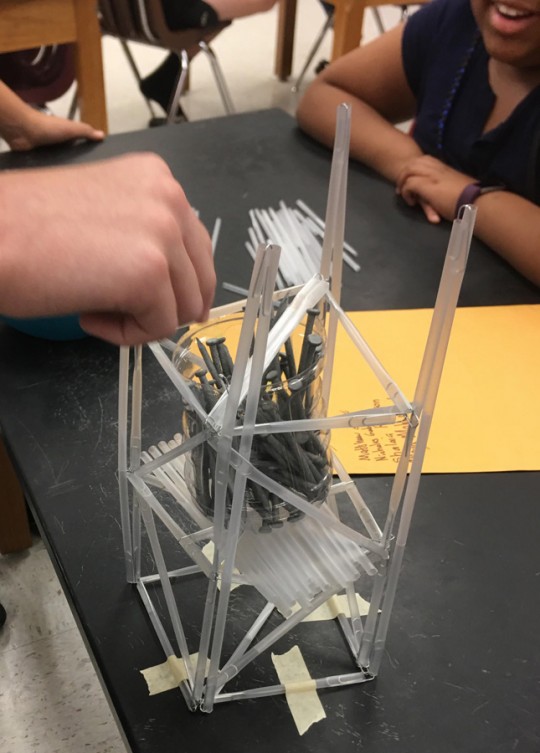 This is our first group project of the year in science, and being able to work with others is paramount. With so much screen time in their lives, some of the students struggle with true “FaceTime”…communicating with others in person. As teachers, we talk to each other a lot about this issue and what we can do about it. We can’t do much about the phones and other screens in their lives, but we can help them learn how to communicate better and more effectively in person. It helps tremendously that we have a very strong group of teachers in our Language Arts department who incorporate good communication skills in their classrooms.
This is our first group project of the year in science, and being able to work with others is paramount. With so much screen time in their lives, some of the students struggle with true “FaceTime”…communicating with others in person. As teachers, we talk to each other a lot about this issue and what we can do about it. We can’t do much about the phones and other screens in their lives, but we can help them learn how to communicate better and more effectively in person. It helps tremendously that we have a very strong group of teachers in our Language Arts department who incorporate good communication skills in their classrooms.
As much as we try to incorporate some technology (where appropriate) in our teaching, technology isn’t always the solution, just as much as technology isn’t always the problem. It helps to remember that some kids are just innately quiet and shy, this having nothing to do with today’s ubiquitous connected devices. So, as educators, we are constantly seeking a good balance, for all of our students.
Our administration here at Ransom is all about making students the priority. In doing that, they support us, the teachers, because we are the forces on the ground making it possible. We all agree, administrators and teachers alike, that the students are why we are here. And they are why our main school improvement goal is, of course, increasing academic achievement in all content areas.
There is a saying: “If the kids are not learning the way we teach, maybe we should teach the way they learn.” Sometimes this rings true. One way is to teach them, and then have them apply what they have learned through project-based learning. Hence, the Straw Structure Challenge. And because they are learning with their hands, the knowledge is much more likely to stick. We all have a great time! After all, this is science, the best subject of all, right? What better place to build cool STEM projects than in science! #ScienceIsCool
Lipscomb Art Teacher Receives Visual Arts Association Classroom Grant
September 23, 2018
Sally Miller of Lipscomb Elementary School has been been name the 2018 Visual Arts Association of Northwest Florida Classroom Grant winner. The grant will provide the opportunity to incorporate “STEAM” (Science, Technology, Engineering, Art, and Math) into her art room curriculum.
Art has always been tied in with other curriculum, but unique supplies for specific lessons on creative higher order thinking will be used to engage students.
Pictured: Lipscomb Elementary teacher Sally Miller (left) and VAA President Pat Page. Courtesy photo for NorthEscambia.com, click to enlarge.
Photo Gallery: Flomaton Celebrates Railroad Junction Day
September 23, 2018
Flomaton celebrated the town’s heritage Saturday with Railroad Junction Day. The day featured a variety of free activities, demonstrations, entertainment, food and vendors as friends and neighbors gathered for the event.
 For a NorthEscambia.com photo gallery click here.
For a NorthEscambia.com photo gallery click here.
Gallery includes Railroad Junction Festival photos and car show photos.
NorthEcambia.com photos, click to enlarge.
Weekend Gardening: It’s Easy To Attract Hummingbirds
September 22, 2018
by UF/IFAS Extension
Few sights are more thrilling in the garden than rapidly moving hummingbirds darting among colorful flowers. Hummingbirds, also known as hummers, are always a wonder to see, and it’s easy to attract them to your garden.
In Florida, we see three different types of hummingbirds, but the most common is the ruby-throated. This feathered jewel is only about three inches long and weighs as little as a single penny.
For their size, hummingbirds have among the largest appetites in the bird world. They feed every 10 or 15 minutes from dawn until dusk. During this period, they eat more than half their weight in food and 8 times their weight in water.
If you’re fascinated by hummingbirds, you probably hang out a feeder or two in the summer to provide them with sugar water. Artificial feeders will attract hummingbirds.
However, feeders should not be the sole source of food provided. The sugar solution may appeal to the hummingbirds’ sweet tooth, but it provides little nourishment. Nectar is much more vital to the hummingbird than just water and sugar. By planting certain flowers and shrubs, home gardeners can provide food and habitat for hummingbirds.
Typical hummingbird flowers are red, have a tubular shape and have no strong scent. But there are several notable exceptions to this general rule. Many plants with red flowers don’t contain very much nectar. Roses, petunias, geraniums and zinnias have brilliant colors but little nectar.
Plants that produce an abundance of flowers over an extended period of time and those that require little care are good choices. Native plants can “fill the bill” where nectar-seekers are concerned and should be used whenever possible.
Perennials that are recommended as nectar sources include butterfly milkweed (Asclepias tuberosa), red basil (Calamintha coccinea), shrimp plant (Justicia brandegeana), cigar plant (Cuphea ignea), firespike (Odontonema stricta), red star hibiscus (Hibiscus coccineus), and obedient plant (Physostegia spp.).
It’s also important to plant a mixture of nectar producing trees, vines and shrubs that have overlapping blooming seasons. This will insure that a continuous source of nectar will be available to hummingbirds throughout the growing season. Some of the species recommended include red buckeye, bottlebrush, firebush (Hamelia patens), wild azalea, trumpet vine, and coral honeysuckle.
Contrary to popular belief, hummingbirds are not strictly nectar feeders. Insects and other invertebrates are the primary source of protein for adult hummingbirds and their young. An adult female can consume up to 2,000 insects per day. Small invertebrates including mosquitoes, gnats, small bees, fruit flies, spiders, caterpillars, aphids, and insects eggs make up the hummingbirds diet. So keep your plants free of pesticides. Pesticides destroy the insect food base vital to hummingbirds and their offspring, and may also contaminate the nectar they drink.
And if you do use artificial feeders, remember that the sugar solutions must be kept fresh. Florida’s hot weather can cause rapid bacterial growth in these feeders and birds that drink contaminated water could die. To avoid this, change the solution every 3 to 5 days. Clean the feeders with hot water and white vinegar. Do not use soap or chlorine bleach.
Jay Man Wins Title Of National Electrician Of The Year
September 21, 2018
Thursday night, a Jay man was named the National Electrician of the Year by Klein Tools.
With a knock at his front door during a live online video stream, Mike Adams received the good news as his family stood with by his side.
Working in the trades isn’t just a career for Adams.
It’s a family tradition dating back four generations. With his mom, dad, uncles and cousins working by his side, there was never a doubt that Adams would grow to love and live by the rules of the trades.
Through his years as an electrician, Adams learned the importance of proper safety procedures and a dedication to even the smallest details of a job. He instills these lessons in the next generation of electricians as an advisor for SkillsUSA where he has helped lead many students to success in regional and national competitions.
Adam’s work takes him all over Escambia and Santa Rosa counties in Florida and Escambia County in Alabama.
Adams was previously named Klein Tools’ Southeast Electrician of the Year and won the national title. Judging criteria included professional achievement, safety excellence and community dedication.
Courtesy images for NorthEscambia.com, click to enlarge.
Bratt Elementary School Names Students Of The Month
September 19, 2018
Bratt Elementary School has named their Students of the Month for September. They are:
Pre-K
- Amahl Atallah
- Jaxon Bullard
Kindergarten
- Avaiha Colbert
- Patton Amos
- Nikko Bazaldua
- Melody Sage
1st Grade
- Audrina Miller
- Chayton Rolin
- Walker Morris
- Brooklynne Fountain
- Ella Grace Diller
2nd Grade
- Alexis Amerson
- Keylashia Randle
- Mason Helton
- Noah Luker
3rd Grade
- Morgan Bossard
- Ja’Kari Evans
- Sawyer Gilmore
- Jamaris Durant
- Kaylee Wilson
4th Grade
- Christian Carraway
- Lori Hall
- Presley Johnson
5th Grade
- LanDon Johnson
- Talise Gregson
- Reece Starns
- Desiray Bagwell



